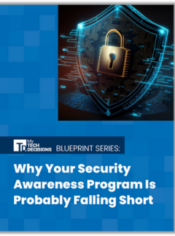“BBookX fit in really nicely with the course — we have to cover a lot, and it was helpful to know the textbook had updated info on everything I planned to teach,” says Pursel. “Plus, the tool was a good way for students to experience what IST is all about.”
Pursel says the tool can also help instructors “rapidly prototype” courses, or think through and evaluate a course before it begins. One way it can do this is through discovery — he says that because the system searches for all kinds of content related to the given keywords, it can help instructors find new information.
“While building my textbook, I came across subjects and topics I hadn’t known about before,” says Pursel. “I was able to learn something new and then pass that along to my students.”
But the students in Pursel’s class won’t just be reading BBookX books; they’ll also be creating them. Because IST 110 is an introductory course, Pursel says a lot of his students come from many different majors, and he has planned a homework assignment that will take an interdisciplinary approach.
“I’m going to ask them to build a small book about how IST impacts their chosen discipline,” says Pursel. “For example, communications students could create a book that talks about the latest broadcasting technologies.”
Kyle Bowen, director of Education Technology Services in TLT, says the students won’t just learn from the information they put in their books, but also from the process itself.
“BBookX can inspire new experiences for our students,” Bowen says. “The person who learns the most from a textbook is the person who writes it. There are interesting opportunities for lifelong learning when students are able to actively create their own learning materials.”
Bowen says that while these types of assignments indeed create new learning opportunities for students, BBookX also marks the first step into a new genre of Open Educational Resources (OER) — freely accessible and open materials that can be used for teaching, learning and research. BBookX can reduce costs and encourage the use of OER while also introducing new bionic assessments and bionic learning aids.
“A key challenge in adopting OER is discovering relevant material and publishing it in an accessible format. But using intelligence systems like BBookX can help not only uncover the material, but also provide new delivery options,” says Bowen. “With BBookX, we’re introducing a new era of media that we haven’t seen before. Now it’s possible to produce accurate and remixable bionic books, created through the combined effort of creative people and intelligent machines.”
If you enjoyed this article and want to receive more valuable industry content like this, click here to sign up for our digital newsletters!










Leave a Reply